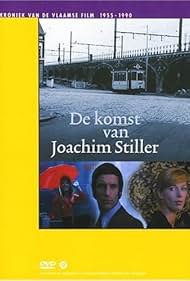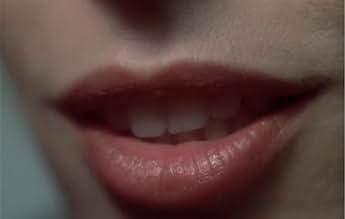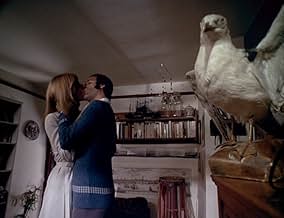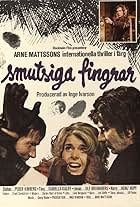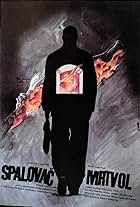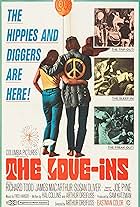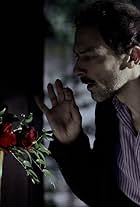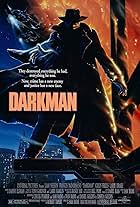IMDb RATING
7.4/10
417
YOUR RATING
Freek and Simone's lives are taken over by the bizarre character Joachim Stiller.Freek and Simone's lives are taken over by the bizarre character Joachim Stiller.Freek and Simone's lives are taken over by the bizarre character Joachim Stiller.
Bert André
- Assistent lijkenhuisdirekteur
- (as Bert Andre)
Storyline
Did you know
- TriviaWhile Freek Groenevelt waits in front of the city hall till the rain stops, Hubert Lampo - the writer of the novel - stands next to him.
- GoofsWhen Freek remembers his childhood trauma set during the second world war, all the actors have long Seventies style haircuts.
- Quotes
Lily van de Kastelen: You look like someone who can only write about women and love. Do you know my motto?
Freek Groenevelt: No.
Lily van de Kastelen: Love doesn't belong in your head, love belongs in your body.
- Alternate versionsOriginally aired on Belgian television as three episodes of about one hour each. These were later reworked to a two-hour movie. The 'Koninklijk Belgisch Filmarchief' DVD-version contains the TV-version as one long film of 153 minutes.
- ConnectionsEdited from King Kong (1933)
Featured review
Chris Nolan is currently the most popular master of the puzzle film -creating elaborate suspense mysteries that tantalize audiences, ranging from cult status (MEMENTO) to blockbuster proportions (INCEPTION).
Belgian director Harry Kumel has achieved the cult part of the equation with loyal followings for his early '70s movies DAUGHTERS OF DARKNESS and MALPERTUIS, but it is THE RETURN OF JOACHIM STILLER that I hope will someday cement his reputation in the pantheon of cinema auteurs.
Made for TV (Dutch is the language and casting mode, for a Belgian topic), film was never released in America and remains extremely obscure 35 years later. I will discuss its merits and indicate some of its unfortunate parochialism that made it a tough-sell for export.
The film brought to mind Wojciech Has's brilliant masterpiece THE SARAGOSSA MANUSCRIPT. Thanks to influential backing by fans like Jerry Garcia, that wonderful Polish film has developed an ever-growing (if small) cult. All Kumel needs is a similar champion.
Hugo Metsers stars as Freak (spelled with a double e, though IMDb's spell-check won't let me type it that way!), a journalist who starts the film interested in Kafka, more than a hint of how his dream-like, self-examining adventures will unfold. As in any good "Twilight Zone" episode, little things in his daily life become confusing and illogical, making him question existence in general.
One mundane early episode is pertinent: as he sits in his usual café, 3 blond, studly workmen in overalls arrive to completely dig up the street outside, snarling local traffic. He and the café owner comment on how they look more like extras in a Hollywood super-production than real workmen, and Freak is alarmed when they put the street back together without accomplishing anything. He writes an article about this non-event and sets in motion even stranger repercussions.
Based on a novel by Hubert Lampo (not sure if he was ever translated for English-speakers) everybody terms as "magical realism", the film goes off on too many tangents for its own good, resulting in a bloated 154-minute running time.
Chief candidate for excision that would help the whole is a nutsy subplot involving a mad artist, who is exploited by a stereotypical (even with fake white streak in his hair) art dealer, eating up several reels worth of over-the-top slapstick and general nastiness. In an American movie the artist would be played by Prof. Irwin Corey and Julian Schnabel would be a good choice as the dilettante exploiter, but the scenes are merely distasteful black humor right out of THE MAGIC Christian -mere misanthropy with a capital M.
Also holding JOACHIM STILLER back are too many local in-jokes and references. My stamp collecting fanaticism as a youth helped me no end in following some of these, as the use of an old (1919) stamp on letters is a key plot point I immediately noticed, since I had that stamp in my Belgian collection, while the art dealer's later reference to Katanga resonated since I had collected the stamps of that breakaway province (and its sibling Sud Kasai) of the old Belgian Congo back in the '60s. This stuff would be meaningless to a general "foreign" (that means me) audience.
Though made for TV, film includes full-frontal-nudity and Kumel had the good sense to team Freak with two fabulously beautiful leading ladies, Willeke van Ammelrooy (the bombshell of so many wonderful '70s Dutch movies like FRANK & EVA) and Cox Habbema. The color scheme and their Swinging costumes are more a late '60s time capsule than '70s, and in general the film should have been (perhaps) re-set in London, shot in English, lost its localism and substituted universal elements. I know this is blasphemy to fans of indigenous cinema, but I'm sure the overall movie would have benefited and in the long run it might have become as well known as English-shot DAUGHTERS OF DARKNESS.
Belgian director Harry Kumel has achieved the cult part of the equation with loyal followings for his early '70s movies DAUGHTERS OF DARKNESS and MALPERTUIS, but it is THE RETURN OF JOACHIM STILLER that I hope will someday cement his reputation in the pantheon of cinema auteurs.
Made for TV (Dutch is the language and casting mode, for a Belgian topic), film was never released in America and remains extremely obscure 35 years later. I will discuss its merits and indicate some of its unfortunate parochialism that made it a tough-sell for export.
The film brought to mind Wojciech Has's brilliant masterpiece THE SARAGOSSA MANUSCRIPT. Thanks to influential backing by fans like Jerry Garcia, that wonderful Polish film has developed an ever-growing (if small) cult. All Kumel needs is a similar champion.
Hugo Metsers stars as Freak (spelled with a double e, though IMDb's spell-check won't let me type it that way!), a journalist who starts the film interested in Kafka, more than a hint of how his dream-like, self-examining adventures will unfold. As in any good "Twilight Zone" episode, little things in his daily life become confusing and illogical, making him question existence in general.
One mundane early episode is pertinent: as he sits in his usual café, 3 blond, studly workmen in overalls arrive to completely dig up the street outside, snarling local traffic. He and the café owner comment on how they look more like extras in a Hollywood super-production than real workmen, and Freak is alarmed when they put the street back together without accomplishing anything. He writes an article about this non-event and sets in motion even stranger repercussions.
Based on a novel by Hubert Lampo (not sure if he was ever translated for English-speakers) everybody terms as "magical realism", the film goes off on too many tangents for its own good, resulting in a bloated 154-minute running time.
Chief candidate for excision that would help the whole is a nutsy subplot involving a mad artist, who is exploited by a stereotypical (even with fake white streak in his hair) art dealer, eating up several reels worth of over-the-top slapstick and general nastiness. In an American movie the artist would be played by Prof. Irwin Corey and Julian Schnabel would be a good choice as the dilettante exploiter, but the scenes are merely distasteful black humor right out of THE MAGIC Christian -mere misanthropy with a capital M.
Also holding JOACHIM STILLER back are too many local in-jokes and references. My stamp collecting fanaticism as a youth helped me no end in following some of these, as the use of an old (1919) stamp on letters is a key plot point I immediately noticed, since I had that stamp in my Belgian collection, while the art dealer's later reference to Katanga resonated since I had collected the stamps of that breakaway province (and its sibling Sud Kasai) of the old Belgian Congo back in the '60s. This stuff would be meaningless to a general "foreign" (that means me) audience.
Though made for TV, film includes full-frontal-nudity and Kumel had the good sense to team Freak with two fabulously beautiful leading ladies, Willeke van Ammelrooy (the bombshell of so many wonderful '70s Dutch movies like FRANK & EVA) and Cox Habbema. The color scheme and their Swinging costumes are more a late '60s time capsule than '70s, and in general the film should have been (perhaps) re-set in London, shot in English, lost its localism and substituted universal elements. I know this is blasphemy to fans of indigenous cinema, but I'm sure the overall movie would have benefited and in the long run it might have become as well known as English-shot DAUGHTERS OF DARKNESS.
Details
Contribute to this page
Suggest an edit or add missing content

Top Gap
By what name was The Arrival of Joachim Stiller (1976) officially released in Canada in English?
Answer